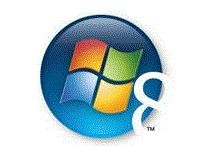Windows 8 'lock-out' fight rumbles on
Microsoft is accused of using a security feature to sustain market dominance with Windows 8.

A war of words over a default security feature on Windows 8 machines has arisen over the past week, with some accusing Microsoft of using it to lock out competition.
Red Hat researcher Matthew Garrett said the secure boot feature, known as the Unified Extensible Firmware Interface (UEFI), was being used by Microsoft to let only OS loaders with digital signatures run on machines pre-loaded with Windows 8.
This would make it very hard for other operating systems, in particular generic versions of Linux, to run on such computers, Garrett claimed.
If Microsoft were serious about giving the end user control, they'd be mandating that systems ship without any keys installed.
UEFI was designed to ensure greater security at the firmware level, yet Garrett believes Microsoft is misusing the feature for its own gain.
"As things stand, Windows 8 certified systems will make it either more difficult or impossible to install alternative operating systems," he wrote in a blog post.
Garrett claimed Windows 8 certification required hardware ship with UEFI switched on. He said Windows 8 certification did not require a feature allowing the user to disable UEFI.
Get the ITPro. daily newsletter
Receive our latest news, industry updates, featured resources and more. Sign up today to receive our FREE report on AI cyber crime & security - newly updated for 2024.
"Why is this a problem? Because there's no central certification authority for UEFI signing keys. Microsoft can require that hardware vendors include their keys. Their competition can't," Garrett said.
"A system that ships with Microsoft's signing keys and no others will be unable to perform secure boot of any operating system other than Microsoft's. No other vendor has the same position of power over the hardware vendors. Red Hat is unable to ensure that every OEM carries their signing key. Nor is Canonical. Nor is Nvidia, or AMD or any other PC component manufacturer. Microsoft's influence here is greater than even Intel's."
Microsoft: We aren't locking you out
Garrett's comments came after Microsoft responded to his initial claims that Windows 8's UEFI feature was being used to "lock-out" competition.
Microsoft said secure boot did not block other operating system loaders, but is simply "a policy that allows firmware to validate authenticity of components."
The Redmond giant said it did not want to stop PC makers from allowing users to decide what went on machines.
"Microsoft supports OEMs having the flexibility to decide who manages security certificates and how to allow customers to import and manage those certificates, and manage secure boot," said Microsoft's Tony Mangefeste, in a blog post.
"We believe it is important to support this flexibility to the OEMs and to allow our customers to decide how they want to manage their systems."
Microsoft was convinced users would be able to run other operating systems with the security feature in place, saying the flexibility had already been shown off on a Samsung tablet with Windows 8 Developer Preview.
"For the enthusiast who wants to run older operating systems, the option is there to allow you to make that decision," Mangefeste added.
Garrett remained unconvinced, saying it remained the case that a computer with only manufacturer and Microsoft keys would not be able boot a generic copy of Linux.
"If Microsoft were serious about giving the end user control, they'd be mandating that systems ship without any keys installed," he added.
"The user would then have the ability to make an informed and conscious decision to limit the flexibility of their system and install the keys."
Tom Brewster is currently an associate editor at Forbes and an award-winning journalist who covers cyber security, surveillance, and privacy. Starting his career at ITPro as a staff writer and working up to a senior staff writer role, Tom has been covering the tech industry for more than ten years and is considered one of the leading journalists in his specialism.
He is a proud alum of the University of Sheffield where he secured an undergraduate degree in English Literature before undertaking a certification from General Assembly in web development.
Most Popular






